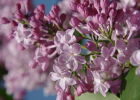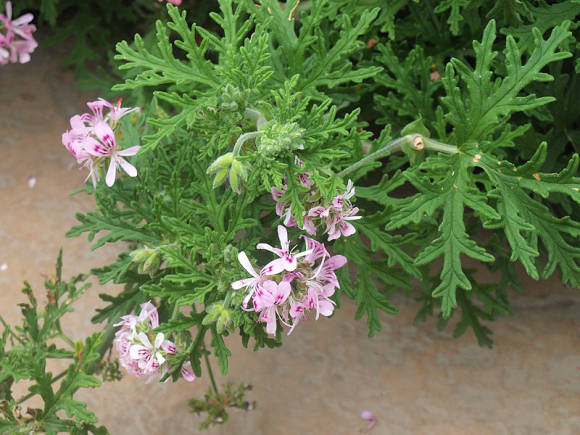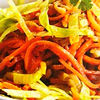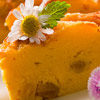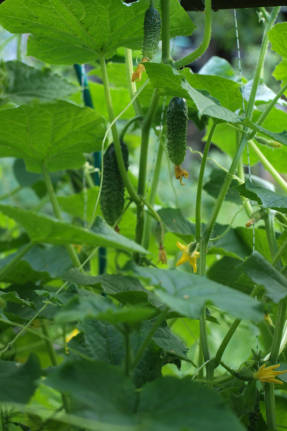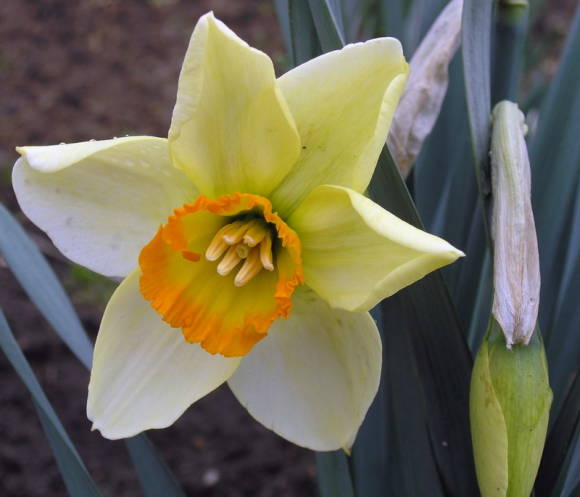
Reed, or Kane begonias (Cane-like begonias) - a group of varieties of decorative begonias, which are characterized by rigid erect stems with well-pronounced thickenings in the nodes, resembling reed or bamboo stems, which gave the name to the entire group. These plants have been cultivated for many, many years, and new varieties are constantly being created. Many have a very lush and decorative flowering that can last almost all year round, and in some varieties, the flowers also have a scent. Due to the characteristic asymmetric and pointed shape of the leaves, this group was formerly called the begonias Angel Wing ('Angel Wing'). Now the varieties Superba and Mallet have been selected from the general group.
The type Superba (Superba) includes varieties that originate from the begonia (Begonia aconitifolia), combined with her at the present time into a single species of scepter begonia (Begonia sceptrum) and Begonia leathermaniae (former name B. plantanifolia) with dissected or deep-lobed leaves. Often there are silvery spots on the leaves, or the entire leaf is silvery. Most varieties are tall, can reach 3-4.5 meters in height, and the leaves are 35 cm long. These varieties are especially appreciated for outdoor planting in countries where there are no frosty winters. When grown indoors, their size can be contained by regular pruning.

- The Mallet type combines varieties with an unusual color or texture of leaves. Almost all of them are hybrids between Kane begonias and begonias of other groups such as shrubby or Rex. A typical representative is the variety 'Arthur Mallet', obtained by crossing Begonia rex 'Eldorado' x Begonia subpeltata, and his descendants.

As indoor plants, from the group of reed begonias, hybrids of spotted begonia are most often grown.
Spotted begonia(Begonia maculata) is a herbaceous shrub native to Brazil. Erect stems up to 45-60 cm high form a crown up to 1 m wide. Leaves are asymmetric, lanceolate, 10-15 cm long and about 5 cm wide, smooth, with a wavy edge, dark green above with numerous silvery specks, reddish below. Petioles are short, about 2 cm. Small pink flowers in umbellate inflorescences form from April to July.
Coral begonia(Begonia corallina) used to be considered a separate species, but now it is synonymous with spotted begonia. This species gave rise to a large number of hybrids, which now appear under the name coral begonia (Begonia x corallina)... Among them there are varieties with white, pink and red flowers. Tamaya is a common cultivar with coral pink flowers that can appear in large clusters throughout the summer. Luzerna and President Carnot are also popular.
White-painted begonia (Begonia x albopicta) obtained by crossing spotted begonia with rich begonia (Begonia maculata x B. olbia)... Also found under the name silver-spotted begonia (Begonia x argenteoguttata)... Perennial herbaceous shrub about 1 m high. The leaves are oblique-heart-shaped, shiny above, olive-green with silvery spots, up to 12-15 cm long and about 5-8 cm wide. The flowers are white or pinkish and appear from June to August.
 |  |
Features of care for reed begonias
In care, reed begonias are the most unpretentious. They can often be found in public spaces, schools, stairwells, where these begonias not only survive, but also retain their decorative effect, and even bloom. The more delicate varieties in this group are Mallet type begonias.
Lighting. Reed begonias need good lighting all year round. They love the morning or setting sun and bright ambient light during the day. When placed in the shade, most do not bloom and the stems stretch out. These begonias can be called shade-tolerant, longer than many other indoor plants, they are able to survive in poor lighting.But if you want a beautiful blooming specimen, give it enough light.
Temperature... These begonias prefer flat indoor conditions. With sharp fluctuations in temperature, some of the leaves can be shed. They do not tolerate frost and react poorly to heat.
Watering... All begonias do not like constantly wet soil. Reed begonias are more tolerant of irrigation problems than other groups. Water them only after the top layer of the soil becomes dry; if waterlogged, they can lose the lower leaves. Avoid getting on the leaves of water, which may cause brown spots.
Read more in the article Watering rules for indoor plants.
Top dressing... Apply weekly general purpose complex fertilizer for indoor plants at a ¼ monthly dosage from spring to fall.
Soil and transplant. The substrate for begonias should be loose, well-drained throughout. A ready-made slightly acidic universal primer with the addition of perlite is suitable. Gently transfer the lump into a slightly larger pot in the spring if the roots have mastered the previous volume well. When transplanting, it is permissible to slightly deepen the bases of the stems, this stimulates the growth of additional roots and shoots from the buried buds.
Read more about the transplant - in the article Transplanting indoor plants.

Pruning and shaping. Reed begonias, if the goal is not to grow a tall plant, need regular pruning. This stimulates branching and prevents too much exposure of the lower parts of the plant. Very tall varieties are thoroughly pruned in early spring, allowing them to grow freely the rest of the time. Smaller varieties are not pruned as much, or they are replaced with regular pruning.
Reproduction. Reed begonias are mainly propagated by stem cuttings. Only a few varieties can be reproduced from leaf cuttings. Seed propagation is also not possible for all varieties.
Read more about grafting - in the article Cutting indoor plants at home.
Pests and diseases... Aphids, mealybugs, scale insects, thrips, spider mites can attack begonias. If parasites are found, treat with appropriate preparations (insecticides or acaricides).
Read more in the article Houseplant pests and control measures.
Begonias are susceptible to fungal diseases: powdery mildew and gray mold. If you find large white spots on the upper side of the leaves, treat with a powdery mildew fungicide. Poor conditions (heat, dryness, lack of light) contribute to the disease.
During damp, cool weather, with waterlogging, dark spots with sporulation fluff may appear on begonias - this is gray rot. Remove affected plant parts, optimize housing conditions and treat with a systemic anti-gray mold fungicide.
